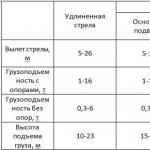Viagra is one of the popular drugs for restoring a healthy erection and treating premature ejaculation. The drug has a high-quality and fast action, is suitable for men of all age categories, has a minimal risk of side effects in the absence of contraindications. You can use Viagra every day. The medicine is not addictive when taken regularly.
It accumulates in a small amount in the blood, however, in the absence of severe liver pathologies, it does not harm health and does not cause complications of existing chronic ailments. Taking Viagra is recommended for men who are unable to independently achieve a strong erection and hold it for a full-fledged sexual intercourse. Erectile dysfunction is the most common disease, which is expressed by sluggish and short-lived erections, premature ejaculation and low sexual energy.
Viagra can be drunk as an auxiliary product in the complex therapy of prostatitis or infertility. The drug is suitable for healthy men who want not only to increase the duration of their intimacy, but also to enhance the sensations received from orgasm. To achieve a temporary effect, it is recommended to take Viagra occasionally.
How to take Viagra for the first time?
How to choose the right dose of the drug?
The drug is available in three standard dosages: 25, 50 and 100 mg. It is not at all obvious that the larger the dose, the more effective the drug will be. Everyone is different. For example, a high dose of Viagra in women can cause the clitoris to become too sensitive and instead of pleasure, lovemaking will turn into monstrous torment. On the other hand, too low a dosage of the drug may not be enough for a full erection in a man.
There are several approaches to the selection of the dosage of the drug. Usually, the drug is prescribed in an average dosage of 50 mg, and then, depending on the onset (or not onset) effect, the dosage is adjusted or, in case of a good effect, does not change. Another approach is to start treatment with a minimum dosage, increasing it until a good therapeutic effect occurs.
The maximum daily dose is 100 milligrams. This amount of the component is safe for middle-aged men who do not have chronic kidney or liver pathologies. The effect of the drug persists for four hours.
The selection of the dose should be done by a doctor who will do it more professionally and with less risk to your health.

Dosage and age
Older men and those who suffer from chronic pathologies of the liver or kidneys should reduce the daily dose to 25-50 milligrams (depending on their health). With regular use of the product (more than twice a week), the daily dose of the active substance should also be reduced.
With frequent use, it is recommended to use 25 milligrams every 24 hours. When using medicines containing vasodilators, you must use the minimum dose of Viagra(up to 25 milligrams per day), after consulting a doctor. Before starting the treatment of sexual dysfunction with Viagra, a number of contraindications must be excluded.
Peculiarities
Viagra should be taken 55-60 minutes before sexual intercourse. The drug should be washed down with warm water or other non-alcoholic liquid. Viagra can be taken with or without food. During treatment, it is recommended to refuse to take food, the fat content of which is above 30%. Fatty food interferes with the high-quality absorption of medicinal substances into the blood and slows down the action of this product.
Give preference to cereals, fruits and vegetables. Viagra should not be taken at the same time as medications containing nitrates, alpha-blockers, nitric oxide donators, and other types of inhibitors. These substances reduce the effect of Sildenafil by increasing its plasma concentration. The break between taking these substances and Viagra should be three weeks. The terms of release and storage of Viagra tablets are indicated on the packaging. Do not accept the product after its expiration date. Before treatment, read the instructions. Make sure that the air temperature in the room does not exceed 25 degrees Celsius.
In addition, do not lose hope for those men whom Viagra did not help the first time. The drug can be taken daily without worrying about health. In addition, it is recommended to make several attempts, and the drug will definitely help next time. In this case, you must comply with the dose prescribed by the doctor.
Popular questions
Can Viagra be taken with alcohol and food?
It is possible, but everything should be only in moderation. A small amount of alcohol will help you relax and tune in to a sexual wave. At the same time, you should not abuse strong alcoholic beverages, which can slow down the effect of the drug.
What to do if Viagra does not work?
Of course, each person has his own characteristics of the body, and the drug can affect them in different ways. In this case, do not despair if the drug did not work the first time. In some cases, several doses of Viagra are required for it to start working. It all depends on the individual parameters and characteristics of the person.
How often can you take Viagra?
The question of how often you can take Viagra is still debatable. After all, such a question really worries men, since we are talking about their health. Men have specific phobias - firstly, they are afraid that this sexual stimulant will definitely harm their health, and, secondly, the body will “get used to it” and, perhaps, will forget how to maintain an erection on its own. In fact, such fears are in vain, because for more than fifteen years of its existence, the drug has repeatedly been subjected to research and tests on a large number of patients with erectile dysfunction. Clinically validated trials have shown that long-term use of Viagra does not pose a great danger to the body. It has been proven that it does not affect either the nervous system or the genitourinary system, and in particular the erection. In addition, the use of Viagra as a drug to improve erection for a regular period of more than three years qualitatively changes the potency. That is, Viagra treats not only symptomatic impotence, but is engaged in its therapeutic treatment. To some extent, this sexual stimulant also acts as a sedative. Many representatives of the stronger sex know the situation when one bad experience provokes the appearance of fear of the next possible failures, and they are not motivated by anything. Very quickly, a man is overcome by fears, a feeling of insecurity in his strengths and capabilities. And regular use of the drug helps the patient to be successful in the intimate sphere.
Viagra contraindications are:
- Individual intolerance to the main drug component (Sildenafil);
- minor age;
- severe diseases of the cardiovascular system (unstable angina pectoris, mitral or aortic valve insufficiency, myocarditis, hypertension, coronary diseases, atherosclerosis);
- serious disorders in the liver or kidneys (acute liver or kidney failure);
- peptic ulcer of the stomach or duodenum;
- chronic pathologies of the nervous system;
- tendency to bleed;
- injury or deformity of the penis;
- diseases of the retina, inherited;
- epilepsy.
The drug is contraindicated in men who have suffered a heart attack or stroke (during the first six months), as well as other major surgical interventions.
Content
Nervous overload, lack of time for sports, lack of vitamins and many other factors can, both individually and in combination, undermine the potency of any man. Taking a Viagra pill is proven by millions of men, an absolutely reliable way to return the ability to a full-fledged sexual intercourse.
Composition and form of release
Viagra is presented for sale in the form of diamond-shaped tablets, biconvex, with rounded, cut edges. On one side there is an engraving of Pfizer, on the other side there is information about the concentration of sildenafil. The tablets are covered with a blue film sheath, placed one or two pieces in blisters, which are packed in a cardboard box of 1-2 units; four pieces - 1 or 3 blisters in a pack; 12 pieces - 1 blister in a pack. The composition of one tablet is presented in the table:
The principle of the drug
Instructions for the use of Viagra (Viagra) states that the active component of the composition of sildenafil refers to powerful selective inhibitors of cyclic guanosine monophosphate (cGMP) and the specific enzyme phosphodiesterase type 5. The physiological mechanism of erection is the release of nitric oxide in the cavernous body during sexual stimulation. This leads to an increase in the level of cGMP, relaxation of the smooth muscle tissue of the cavernous body and increased blood flow, an increase in libido.
Sildenafil does not directly relax the isolated corpus cavernosum, but increases the breakdown of nitric oxide through enzyme inhibition. The substance does not affect myocardial contractility, acts selectively, does not lead to changes in the electrocardiogram, an increase in blood pressure, and vasodilation. Treatment with Viagra leads to an improvement in erection in patients with diabetes, after radical prostatectomy, spinal cord injury.
The pharmacokinetics of sildenafil is linear. It is rapidly absorbed, has a 40% bioavailability, reaches the maximum concentration in an hour. Fatty foods slow down the rate of absorption of the drug. Sildenafil and its dismethyl metabolite bind to plasma proteins by 96%, are found in semen one and a half hours after ingestion.
Drug metabolism occurs in the liver under the action of isoenzymes. The half-life of the n-desmethyl metabolite and amyl nitrite (metabolites) is four hours, the final clearance is 3-5 hours. The remainder of the dose is excreted in the feces and urine. At the age of over 65, the clearance of sildenafil is reduced, the plasma concentration is 40% higher than in young people. In severe renal failure, the time to reach maximum concentration increases.

What is Viagra for?
Sexopathologists prescribe aphrodisiac tablets according to the manufacturer's instructions - to eliminate erectile dysfunction of various degrees of severity. The reason for the inability to maintain an erection during intercourse can be both nervous disorders and vascular disorders inside the penis. In the vast majority of cases, one tablet is enough to completely cope with such a problem in a man.
How to take Viagra
The tablets are intended for oral administration. To increase the absorption of the active ingredient, it is recommended to take the drug before meals. This will provide the fastest and highest effect. Viagra is taken at least one hour before sexual intercourse. The action begins in 30 minutes and lasts at least 4 hours. The dosage is selected depending on the severity of problems with potency. To establish the optimal dose, it is recommended to start with 25 mg. A volume of 50 mg helps to completely restore an erection to the absolute majority of men. The maximum dose is 100 mg per day.
special instructions
The use of Viagra requires compliance with the rules of the instructions. They are described in more detail in the special instructions:
- Before treatment for erectile dysfunction, a physical examination and a complete medical history are required.
- Priapism may develop while taking the tablets. If an erection persists for more than 4 hours, you should seek medical help. Otherwise, the tissues of the penis may be damaged, potency will be irreversibly lost, and the work of the prostate will be disrupted.
- The drug is not prescribed to men for whom sexual activity is undesirable (with heart failure, unstable angina).
- Rarely, during Viagra therapy, non-arteritic anterior ischemic optic neuropathy may develop. Patients over 50 years old, suffering from diabetes mellitus, hypertension, hyperlipidemia, coronary heart disease, and smokers are at risk.
- The drug is not addictive, does not affect the ability to drive vehicles or technical means. While taking the pills, blurred vision may occur, so it is better to refuse to control the mechanisms.
- According to studies, Viagra can be used in women and girls, but in a different form. It enhances the blood supply to the genitals and contributes to their somatic stimulation, allowing you to reach orgasm faster.
- The effect of the reception lasts up to 4 hours. Possible placebo effect.
- The tool does not provoke an uncontrolled erection, it causes it only in the presence of sexual arousal and stimulation.
drug interaction
Viagra tablets can be combined with other medications, causing positive or negative reactions. The combinations from the instructions for use are given:
- The clearance of sildenafil is reduced while taking inhibitors of liver cytochrome isoenzymes - Ketoconazole, Cimetidine, Erythromycin, Itraconazole.
- HIV protease inhibitors Saquinavir, Ritonavir increase the time to reach the maximum concentration of the drug in the blood.
- The bioavailability of Viagra is not affected by a single dose of antacids based on magnesium or aluminum hydroxide.
- Endothelin receptor antagonists, Bosentan, Rifampicin, can reduce the time to reach the maximum concentration of sildenafil.
- The pharmacokinetics of the drug are not affected by Warfarin, Tolbutamide, selective serotonin reuptake inhibitors, thiazides, tricyclic antidepressants, thiazide-like diuretics, calcium antagonists, Azithromycin, acetylsalicylic acid, Amlodipine, sanquinavir.
- Viagra enhances the hypotensive effect of nitrates and nitrites, so this combination or combination with nitric oxide donors is contraindicated.
- Simultaneous administration of the drug with the alpha-blocker Doxazosin can lead to symptomatic postural hypotension.
viagra and alcohol
According to the instructions, Viagra for men is undesirable in combination with alcohol, tinctures. From a chemical point of view, the substances do not interact, but ethanol reduces the absorption rate of sildenafil, increases the load on the heart muscle and the body. It is safe to combine 50 mg of the drug with the following amount of alcohol: no more than 100 g of vodka, 700 ml of beer or 450 ml of wine.

Side effects of Viagra
Many patients note the effect of Viagra is strong, but along with it, side reactions appear. The instruction refers to them the following phenomena:
- skin rash, hypersensitivity reactions, allergies, herpes, itching, increased sweating, dermatitis;
- blurred vision, impaired image clarity, eye pain, photophobia, redness of the sclera, pupil dilation, conjunctivitis, cataracts;
- swelling of the eyelids, increased eye fatigue, diplopia (double vision), increased intraocular pressure;
- sudden hearing loss, noise or pain in the ears;
- flushing, tachycardia, palpitations, angina pectoris, low blood pressure, myocardial ischemia, cerebral thrombosis, heart failure, atrial fibrillation;
- anemia, leukopenia, neuropathy;
- thirst, gout, edema, diabetes mellitus, hyperglycemia, hypoglycemia, hyperuricemia, hypernatremia;
- nasal congestion, mucosal edema, rhinitis, asthma, nosebleeds, laryngitis, sinusitis, pharyngitis, bronchitis, increased cough;
- nausea, loss of taste, dyspepsia, vomiting, abdominal pain, glossitis, colitis, gingivitis, gastritis, stomatitis;
- back pain, myalgia, arthritis, arthrosis, myasthenia gravis, tendon rupture;
- cystitis, priapism, gynecomastia, urinary incontinence, genital edema, anorgasmia;
- headache, fainting, convulsions, dizziness, tremor, drowsiness, insomnia, migraine, depression;
- sensation of heat, swelling of the face, shock, asthenia, chills;
- occasional falls, irritability.
Overdose
According to studies, a single dose of Viagra at a dose of up to 800 mg does not lead to an overdose. During the reception, there are increased and more frequent side effects. If the indicated dose is exceeded, the instruction recommends symptomatic therapy. Shown gastric lavage, intake of sorbents. Hemodialysis is not effective because the active substance binds to blood proteins.
Contraindications
According to the instructions, Viagra contraindications include age under 18, female gender, menopause, hypersensitivity to the components of the composition. The drug is used with caution in the following conditions:
- anatomical deformity of the penis (cavernous fibrosis, angulation, Peyronie's disease);
- diseases leading to the development of priapism (prolonged erection): sickle cell anemia, thrombocytopenia, leukemia, myeloma, blood flow disorders;
- bleeding;
- infections;
- exacerbation of stomach ulcers;
- heart failure, unstable angina, heart muscle disorders;
- hereditary retinitis pigmentosa;
- myocardial infarction or stroke less than six months ago;
- life-threatening arrhythmia, arterial hyper- or hypotension.
Terms of sale and storage
Viagra is a prescription drug that is stored at temperatures up to 30 degrees for five years.
Analogues
Viagra can be replaced by drugs with a similar effect and the same or a different active ingredient. These include:
- Cialis is a tadalafil-based pill that improves erectile function.
- Impaza - potency restoring tablets containing antibodies to endothelial NO-synthase.
- Levitra - tablets based on vardenafil.
- Verona - capsules that affect spermatogenesis, containing extracts of winter cherries, creeping tribulus, beautiful argirea, itchy mucuna.
- Sildenafil is a generic Viagra based on Sildenafil.
- Dynamic is a close analogue of the product with the same active ingredient in the composition.

Viagra price
You can buy Viagra via the Internet or pharmacies. The cost depends on the number of tablets, the concentration of the active ingredient per piece. In Moscow, prices will be:
|
The number of tablets in a pack, the concentration of sildenafil per piece |
Price, rubles |
|
100 mg 1 pc. |
|
|
100 mg 2 pcs. |
|
|
100 mg 4 pcs. |
|
|
50 mg 12 pcs. |
|
|
100 mg 12 pcs. |
Video
Pharmacodynamics. Sildenafil is a potent selective inhibitor of cycloguanosine monophosphate (cGMP)-specific phosphodiesterase type 5 (PDE5). Mechanism of action. The implementation of the physiological mechanism of erection is associated with the release of nitric oxide (NO) in the cavernous body during sexual stimulation. This, in turn, leads to an increase in the level of cGMP, subsequent relaxation of the smooth muscle tissue of the cavernous body and an increase in blood flow. Sildenafil does not have a direct relaxing effect on the isolated human corpus cavernosum, but enhances the effect of nitric oxide (NO) by inhibiting PDE5, which is responsible for the breakdown of cGMP. Sildenafil is selective for PDE5 in vitro, its activity against PDE5 exceeds activity against other known phosphodiesterase isoenzymes: PDE6 - 10 times; PDE1 - more than 80 times; PDE2, PDE4, PDE7-PDE11 - more than 700 times. Sildenafil is 4000 times more selective for PDE5 compared to PDEZ, which is of great importance, since PDEZ is one of the key enzymes in the regulation of myocardial contractility. A prerequisite for the effectiveness of sildenafil is sexual stimulation. clinical data. Cardiology research. The use of sildenafil in doses up to 100 mg did not lead to clinically significant ECG changes in healthy volunteers. The maximum decrease in systolic pressure in the supine position after taking sildenafil at a dose of 100 mg was 8.3 mm Hg. Art., and diastolic pressure - 5.3 mm Hg. Art. A more pronounced, but also transient effect on blood pressure (BP) was observed in patients taking nitrates (see sections "Contraindications" and "Interaction with other drugs"). In a study of the hemodynamic effect of sildenafil at a single dose of 100 mg in 14 patients with severe coronary artery disease (CHD) (more than 70% of patients had stenosis of at least one coronary artery), resting systolic and diastolic pressure decreased by 7 % and 6%, respectively, and pulmonary systolic pressure decreased by 9%. Sildenafil did not affect cardiac output and did not impair blood flow in stenotic coronary arteries, and also led to an increase (by approximately 13%) of adenosine-induced coronary flow in both stenotic and intact coronary arteries. In a double-blind, placebo-controlled study, 144 patients with erectile dysfunction and stable angina who were taking antianginal drugs (except nitrates) performed physical exercise until the severity of angina symptoms improved. The duration of the exercise was significantly longer (19.9 seconds; 0.9 - 38.9 seconds) in patients taking sildenafil at a single dose of 100 mg compared with patients receiving placebo. In a randomized, double-blind, placebo-controlled study, the effect of changing the dose of sildenafil (up to 100 mg) was studied in men (n = 568) with erectile dysfunction and arterial hypertension taking more than two antihypertensive drugs. Sildenafil improved erections in 71% of men compared to 18% in the placebo group. The frequency of adverse effects was comparable to that in other groups of patients, as well as in individuals taking more than three antihypertensive drugs. Studies of visual disorders. In some patients, 1 hour after taking sildenafil at a dose of 100 mg using the Farnsworth-Munsel 100 test, a slight and transient impairment in the ability to distinguish shades of color (blue / green) was detected. 2 hours after taking the drug, these changes were absent. It is believed that the violation of color vision is caused by inhibition of PDE6, which is involved in the process of light transmission in the retina. Sildenafil had no effect on visual acuity, contrast perception, electroretinogram, intraocular pressure, or pupil diameter. In a placebo-controlled crossover study of patients with proven early age-related macular degeneration (n = 9), sildenafil at a single dose of 100 mg was well tolerated. There were no clinically significant changes in vision assessed by special visual tests (visual acuity, Amsler grating, color perception, color passage simulation, Humphrey perimeter and photostress). Efficiency. The efficacy and safety of sildenafil was evaluated in 21 randomized, double-blind, placebo-controlled trials lasting up to 6 months in 3000 patients aged 19 to 87, with erectile dysfunction of various etiologies (organic, psychogenic or mixed). The effectiveness of the drug was assessed globally using an erection diary, an international index of erectile function (a validated questionnaire on the state of sexual function) and a partner survey. The effectiveness of sildenafil, defined as the ability to achieve and maintain an erection sufficient for satisfactory intercourse, has been demonstrated in all studies conducted and has been confirmed in long-term studies lasting 1 year. In fixed dose studies, the ratio of patients reporting that the therapy improved their erections was: 62% (sildenafil 25 mg dose), 74% (sildenafil 50 mg dose) and 82% (sildenafil 100 mg dose) compared to 25% in the placebo group. An analysis of the international index of erectile function showed that, in addition to improving erection, treatment with sildenafil also increased the quality of orgasm, made it possible to achieve satisfaction from sexual intercourse and overall satisfaction. According to the pooled data, 59% of patients with diabetes, 43% of patients undergoing radical prostatectomy and 83% of patients with spinal cord injuries (vs. ). Pharmacokinetics. The pharmacokinetics of sildenafil in the recommended dose range is linear. Suction. Sildenafil is rapidly absorbed after oral administration. Absolute bioavailability averages about 40% (from 25% to 63%). In vitro, sildenafil at a concentration of about 1.7 ng / ml (3.5 nM) inhibits human PDE5 activity by 50%. After a single dose of sildenafil at a dose of 100 mg, the average maximum concentration of free sildenafil in the blood plasma of men is about 18 ng / ml (38 nM). The maximum concentration when taking sildenafil orally on an empty stomach is achieved on average within 60 minutes (from 30 minutes to 120 minutes). When taken in combination with fatty foods, the absorption rate decreases: the maximum concentration decreases by an average of 29%, and the time to reach the maximum concentration increases by 60 minutes, but the degree of absorption does not change significantly (the area under the concentration-time pharmacokinetic curve (AUC) decreases by 11 %). Distribution. The volume of distribution of sildenafil in the equilibrium state averages 105 liters. The relationship of sildenafil and its main circulating N-demethyl metabolite with plasma proteins is about 96% and does not depend on the total concentration of the drug. Less than 0.0002% of the dose of sildenafil (mean 188 ng) was found in semen 90 minutes after taking Metabolism. Sildenafil is metabolized primarily in the liver by the cytochrome CYP3A4 isoenzyme (major pathway) and the cytochrome CYP2C9 isoenzyme (minor pathway). The main circulating active metabolite resulting from the N-demethylation of sildenafil undergoes further metabolism. The selectivity of this metabolite for PDE is comparable to that of sildenafil, and its activity for PDE5 in vitro is about 50% of that of sildenafil. The concentration of the metabolite in the blood plasma of healthy volunteers was about 40% of the concentration of sildenafil. The N-demethyl metabolite undergoes further metabolism; its half-life is about 4 hours. Withdrawal. The total clearance of sildenafil is 41 l / h, and the final clearance is 3-5 hours. After oral administration, as well as after intravenous administration, sildenafil is excreted as metabolites, mainly by the intestines (about 80% of the oral dose) and, to a lesser extent, by the kidneys (about 13% of the oral dose). Pharmacokinetics in special groups of patients. Elderly patients. In healthy elderly patients (over 65 years), the clearance of sildenafil is reduced, and the concentration of free sildenafil in the blood plasma is approximately 40% higher than in young people (18-45 years). Age does not have a clinically significant effect on the incidence of side effects. Kidney dysfunction. With mild (creatinine clearance (CC) 50-80 ml / min) and moderate (CC 30-49 ml / min) degree of renal failure, the pharmacokinetics of sildenafil after a single oral dose of 50 mg does not change. In severe renal failure (CK




Characteristics
- Ingredients: Sildenafil 100 mg
- Action time: up to 5 hours
- Action start: after 30-60 minutes
- Active substance: Sildenafil (Sildenafil)
- Daily dosage: 100 mg
- Application: Suitable for daily
- Alcohol Compatibility: Incompatible
Characteristics
- Ingredients: Sildenafil 100 mg
- Action time: up to 5 hours
- Action start: after 30-60 minutes
- Active substance: Sildenafil (Sildenafil)
- Daily dosage: 100 mg
- Application: Suitable for daily
- Alcohol Compatibility: Incompatible
The effectiveness of the drug: (1 133
ratings, average: 5,00
out of 5)
Viagra
Viagra is a drug used to treat erectile dysfunction in men, and does not affect reproductive properties and libido in general. It is prescribed from the age of 18 onwards without age restrictions (the age of the control group, on which the remedy was successfully tested, was 19-87 years). The drug is available in three different forms: in the form of a regular tablet, tablets for resorption under the tongue (Viagra Soft) and in the form of a gel. All forms of Viagra are taken orally. A regular tablet should be immediately washed down with plenty of water, you do not need to drink soft. If you take Viagra in the form of a gel, then it does not matter whether you drink it or not.
The dosage of the drug depends on the amount of the active substance Sildenafil (sildenafil citrate) in it - 25, 50 and 100 mg. The dosage depends on individual tolerance, as well as on the effectiveness of the impact on the patient. People with diseases of the liver and kidneys are prescribed a reduced dose of 25 mg. The maximum daily dose is 100 mg. Viagra is taken 1 hour before sexual intercourse, no more than once a day. It is important to know: even if the total daily dose does not exceed 100 mg, the intake should still be a one-time. Viagra in the form of a gel is absorbed faster, so you can take it 30-40 minutes before sexual contact, in some cases it begins to work after 15-20 minutes. To improve the effect of Viagra, it is recommended not to eat fatty foods before taking it, as it can significantly reduce the effect of the drug. To achieve the greatest result, it is generally desirable to take Viagra on an empty stomach.
Side effects include: dizziness, nasal congestion, vision problems (blurring, excessive sensitivity), headache.
The effect of the drug lasts for 3-5 hours, during which it is possible to return the erection several times. Extremely rare cases of a side effect, in the form of priapism (too long painful erection). Basically, its occurrence is due either to an overdose or a painful predisposition.

Women can also take Viagra, the method of application and doses in this case are the same as for men. The drug is not intended for the treatment of women from diseases, it only increases sensitivity and sexual arousal, with sufficient sexual stimulation. There is no strict ban on taking Viagra during pregnancy, but a mandatory consultation with a doctor is required.
Before use, consultation with a therapist is necessary, which will eliminate the risk of aggravation of peptic ulcers and diseases associated with increased bleeding, if any. In addition to these diseases, Viagra should be taken with caution by people with cardiovascular disease (CVD), penile deformity, a predisposition to priapism, as well as people with hereditary retinitis pigmentosa.
In all these cases, a doctor's consultation is mandatory, because, with the exception of diseases of the heart and blood vessels, the negative effect of Viagra on patients has not been proven. People suffering from CVD should not take Viagra in cases where sexual intercourse is contraindicated for them or should be taken with caution. In addition, Viagra can enhance the effect of drugs that lower blood pressure.
It should be noted that Viagra is a drug that enhances erectile mechanisms and does not work without sexual stimulation. The effect can only be achieved with an appropriate level of arousal. The remedy was created for treatment, and not to replace potency. During recent studies, doctors have come to the conclusion that it is better for middle-aged men not to take Viagra more than once a week, and also not to exceed the course of treatment, limiting it to 2-3 months.
INN: Sildenafil
Manufacturer: Fareva Amboise
Anatomical-therapeutic-chemical classification: Sildenafil
Registration number in the Republic of Kazakhstan: No. RK-LS-5 No. 012217
Registration period: 02.05.2018 - 02.05.2023
Instruction
Tradename
Viagra ®
International non-proprietary name
Sildenafil
Dosage form
Film-coated tablets 50 mg, 100 mg
Compound
One tablet contains
active substance - sildenafil citrate 70.225 mg and 140.450 mg (equivalent to sildenafil 50 mg and 100 mg),
auxiliary substances: microcrystalline cellulose, anhydrous calcium hydrogen phosphate, croscarmellose sodium, magnesium stearate,
Shell composition: Opadry blue OY-LS-20921 (hypromellose, lactose, triacetin, titanium dioxide (E 171) and indigo carmine aluminum varnish (E132)), Opadry transparent YS-2-19114 A (hypromellose and triacetin).
Description
Film-coated tablets, blue, biconvex, in the form of a rounded diamond marked "Pfizer" on one side and "VGR 50" (for a dosage of 50 mg) or "VGR 100" (for a dosage of 100 mg) on the other side.
Pharmacotherapeutic group
Preparations for the treatment of urological diseases. Other drugs for the treatment of urological diseases, including antispasmodics. Preparations for the treatment of erectile dysfunction. Sildenafil.
ATX code G04BE03
Pharmacological properties
Pharmacokinetics
Suction
Sildenafil is rapidly absorbed after oral administration. Peak plasma concentrations (Cmax) of sildenafil are reached within 30 to 120 minutes (median 60 minutes) after oral administration on an empty stomach. The mean absolute oral bioavailability is 41% (with a range of 25-63%). After oral administration of sildenafil in the recommended dose range (25-100 mg), the area under the pharmacokinetic curve (AUC) and Cmax increase in direct proportion to the dose taken.
When taking sildenafil with food, the absorption rate decreases with an average delay in the time to reach maximum plasma concentrations (tmax) of 60 minutes and an average decrease in Cmax by 29%.
Distribution
The mean equilibrium volume of distribution (Vd) for sildenafil is 105 L, indicating its distribution in body tissues.
After oral administration of sildenafil at a single dose of 100 mg, the mean maximum total plasma concentration of sildenafil is approximately 440 ng/ml (with a coefficient of variation of 40%). Due to the fact that sildenafil (and its main circulating metabolite, N-desmethyl metabolite) is 96% bound to plasma proteins, the average maximum concentration of free sildenafil in plasma is 18 ng / ml (38 nM). Protein binding is independent of total drug concentrations.
In healthy volunteers who received sildenafil once at a dose of 100 mg, less than 0.0002% (mean 188 ng) of the dose of the drug was determined in the ejaculate 90 minutes after taking the dose.
Metabolism
Research in vitro
The metabolism of sildenafil is carried out mainly with the participation of microsomal isoenzymes of the liver CYP3A4 (main pathway) and CYP2C9 (secondary pathway) of cytochrome P450. For this reason, inhibitors of these isoenzymes can reduce, and inducers of these isoenzymes - increase the clearance of sildenafil.
By N-demethylation, the main circulating metabolite of sildenafil is formed, which undergoes further metabolism with a final elimination half-life of approximately 4 hours. The metabolite is characterized by a phosphodiesterase selectivity profile comparable to that of sildenafil, and the activity of the metabolite in vitro in relation to phosphodiesterase type 5 (PDE-5) is approximately 50% of the activity of the original substance of the drug.
Plasma concentrations of this metabolite are approximately 40% of sildenafil concentrations.
Sildenafil is a weak inhibitor of cytochrome P450 isoforms 1A2, 2C9, 2C19, 2D6, 2E1 and 3A4 (IC > 150 µM). Provided that the maximum concentration of sildenafil in the blood plasma after taking the recommended doses of the drug is approximately 1 μm, it is unlikely that sildenafil will change the clearance of the substrates of these isoenzymes.
breeding
The total clearance of sildenafil is 41 l / h, and the final half-life is from 3 to 5 hours. After oral administration, sildenafil is excreted as metabolites mainly in the faeces (about 80% of the oral dose) and to a lesser extent in the urine (about 13% of the oral dose).
Pharmacokinetics in special groups of patients
Elderly patients
In healthy elderly volunteers (aged 65 years or older), there was a decrease in the clearance of sildenafil, causing an increase in plasma concentrations of sildenafil and its active N-demethylated metabolite by approximately 90% compared with those in healthy younger volunteers (18-45 years old) . Due to age-related differences in plasma protein binding, the corresponding increase in free sildenafil plasma concentration is approximately 40%.
In patients with mild or moderate renal dysfunction (creatinine clearance 30-80 ml / min), the pharmacokinetics of sildenafil after a single oral dose of 50 mg does not change. The increase in the average AUC and Cmax of the N-demethylated metabolite was up to 126% and up to 73%, respectively, compared with such indicators in people of the same age without impaired renal function. However, due to the high inter-patient variability, these differences were not statistically significant. In patients with severely impaired renal function (creatinine clearance< 30 мл/мин) клиренс силденафила снижался, что приводило к средним повышениям показателей AUC и Cmax, соответственно на 100 % и 88 % по сравнению с пациентами аналогичного возраста без нарушений функции почек. Кроме того, значения AUC и Cmax для N-деметилированного метаболита также значительно повышались - на 200 % и 79 %, соответственно.
In patients with mild to moderate liver cirrhosis (Child-Pugh stages A and B), sildenafil clearance was reduced, resulting in an increase in AUC (by 84%) and Cmax (by 47%) compared with volunteers of the same age without liver dysfunction.
The pharmacokinetics of sildenafil in patients with severe hepatic impairment has not been studied.
Pharmacodynamics
Mechanism of action
Viagra®, an oral drug for the treatment of erectile dysfunction, that is, during sexual stimulation, it restores impaired erectile function by increasing blood flow to the penis.
The physiological mechanism of penile erection involves the release of nitric oxide (NO) in the cavernous bodies upon sexual stimulation. Nitric oxide activates the enzyme guanylate cyclase, which leads to increased levels of cyclic guanosine monophosphate (cGMP), followed by smooth muscle relaxation in the cavernous bodies and increased blood flow.
Sildenafil is a strong and selective inhibitor of cGMP-specific phosphodiesterase type 5 (PDE-5), which is responsible for the breakdown of cGMP in the cavernous bodies. Sildenafil has a peripheral effect on erection. Sildenafil does not have a direct relaxing effect on the isolated human corpus cavernosum, but significantly enhances the relaxing effect of NO on this tissue. When the NO/cGMP metabolic pathway is activated, as occurs during sexual stimulation, PDE-5 inhibition by sildenafil results in an increase in cGMP levels in the cavernous bodies. Therefore, for sildenafil to provide the desired productive pharmacological action, sexual stimulation is necessary.
Pharmacodynamic effects
In vitro studies
Sildenafil selectively acts on PDE-5, which is involved in the regulation of the erection process. The action of Viagra® on PDE-5 is stronger than on other known phosphodiesterases. This effect of Viagra® action is 10 times stronger than the effect on PDE-6, which takes part in phototransformation processes in the retina. When used in the maximum recommended doses, the selectivity of sildenafil to PDE-5 is 80 times higher than its selectivity to PDE-1, more than 700 times - selectivity to PDE-2, PDE-3, PDE-4, PDE-7, PDE-8 , PDE-9, PDE-10 and PDE-11. In particular, the selectivity of sildenafil to PDE-5 is 4000 times higher than its selectivity to PDE-3, a cAMP-specific isoform of phosphodiesterase involved in the regulation of heart contractions.
Clinical efficacy and safety
The safety and efficacy of sildenafil have been confirmed by data from long-term studies.
Indications for use
Erectile dysfunction, characterized by the inability to achieve or maintain an erection of the penis sufficient for satisfactory intercourse.
Viagra® is effective only with sexual stimulation.
Dosage and administration
For oral use.
Viagra ® may be taken with or without food. However, to start the action of Viagra ® may take longer if taken with food.
Dosing regimen
Use in adults
Recommended dose of Viagra ® is 50 mg orally approximately 1 hour before sexual intercourse. Based on efficacy and tolerability, the dose may be increased to 100 mg. The maximum recommended dose is 100 mg.
The tablet should be swallowed whole with a glass of water.
Special patient groups
Elderly patients
In elderly patients (≥ 65 years), dose adjustment is not required.
Patients with impaired renal function
With mild to moderate renal dysfunction (creatinine clearance 30-80 ml / min), dose adjustment is not required. Due to a decrease in the clearance of sildenafil in patients with severe renal impairment (creatinine clearance< 30 мл/мин), следует рассмотреть возможность применения Виагры® в дозе 25 мг. Исходя из эффективности и переносимости препарата при необходимости, его дозу можно увеличивать поэтапно до 50 мг и до 100 мг.
Patients with impaired liver function
Due to the fact that the clearance of sildenafil is reduced in patients with impaired liver function (for example, cirrhosis), the possibility of using the drug at a dose of 25 mg should be considered. Based on the effectiveness and tolerability of the drug, if necessary, its dose can be increased in stages up to 50 mg and up to 100 mg.
Patients of childhood and adolescence
Sildenafil is not indicated for use in children (< 18 лет).
Use in patients taking other medicinal products
In order to reduce the risk of developing postural arterial hypotension in patients treated with alpha-blockers, the condition of patients receiving alpha-blockers should / stabilize the condition of patients receiving alpha-blockers before starting treatment with sildenafil. In addition, the possibility of using sildenafil should be considered, starting with a dose of 25 mg.
Side effects
When using Viagra®, undesirable effects were registered, which were classified according to the frequency of their manifestation as follows: very often (≥ 1/10), often (from ≥ 1/100 to< 1/10) , infrequently (from ≥ 1/1000 to< 1/100) And rare (≥ 1/10,000 and< 1/1000) .
Often
- headache
Often
Dizziness
Color distortions of vision (chloropsia, chromatopsia, cyanopsia, erythropsia, xanthopsia), visual disturbance, blurred vision
Hyperemia, hot flashes
- nasal congestion
Dyspepsia, nausea
Infrequently
Hypersensitivity
Drowsiness, hypoesthesia
Lacrimation disorders (dry eye, lacrimal gland dysfunction, increased lacrimation), eye pain, photophobia, photopsia, ocular hyperemia, visual brightness, conjunctivitis
Spatial disorientation (vertigo), tinnitus
Tachycardia, palpitations
Arterial hypertension, arterial hypotension
Epistaxis, sinus congestion
Pain in the upper abdomen, gastroesophageal reflux disease, vomiting, dry mouth
Myalgia, pain in the extremities
Hematuria
Chest pain, fatigue, feeling hot
Elevated heart rate
Rarely
- acute cerebrovascular accident, transient ischemic attack, seizure*, seizure recurrence*, syncope
Anterior non-arteritic ischemic optic neuropathy*, retinal vascular occlusion*, retinal hemorrhage, arteriosclerotic retinopathy, retinal disease, glaucoma, visual field defect, diplopia, decreased visual acuity, myopia, asthenopia, vitreous floaters, iris disease, mydriasis, presence of iridescent circles in the field of vision, swelling of the eye, swelling of the eye, visual disturbance, conjunctival hyperemia, eye irritation, unusual sensation in the eye, swelling of the eyelids, discoloration of the sclera
Deafness
- sudden cardiac death*, myocardial infarction, ventricular arrhythmia*, atrial fibrillation, unstable angina
Feeling of tightness in the throat, swelling of the nose, dryness of the nasal mucosa
Oral hypoesthesia
Stevens-Johnson syndrome*, toxic epidermal necrolysis*
Bleeding from the penis, priapism*, hematospermia, increased erection - irritability
*adverse events recorded only during post-marketing surveillance.
Reporting Suspected Adverse Reactions
Communication of information about suspected adverse reactions identified after registration of the medicinal product is of great importance. This allows continued monitoring of the benefit/risk balance of the medicinal product.
Healthcare professionals and patients are asked to report any adverse reactions to the address provided at the end of this package leaflet.
Contraindications
Hypersensitivity to the active substance or to any of the excipients
Simultaneous administration of drugs that are donors of nitric oxide (amyl nitrite) or nitrates in any form
Simultaneous administration with guanylate cyclase stimulants (riociguat)
severe liver failure
Hereditary degenerative diseases of the retina (for example, hereditary retinitis pigmentosa (a small number of these patients have hereditary disorders of the functions of retinal phosphodiesterases))
Loss of vision in one eye due to non-arteritic anterior ischemic optic neuropathy, whether or not the episode was associated with prior use of a PDE5 inhibitor
Arterial hypotension (BP< 90/50 мм рт. ст.)
Severe cardiovascular disease (eg, severe heart failure, unstable angina)
Myocardial infarction in the last 6 months
Stroke in the last 6 months
Concomitant use with CYP3A4 isoenzyme inhibitors (eg, ketoconazole, itraconazole, ritonavir, erythromycin, saquinavir, clarithromycin)
Concomitant use of drugs for the treatment of pulmonary arterial hypertension (bosentan, iloprost) and drugs containing sildenafil or any other PDE-5 inhibitor
Men with rare hereditary problems of galactose intolerance, the Lapp lactase deficiency, or glucose-galactose malabsorption syndrome
Concomitant use with other oral or topical agents for the treatment of erectile dysfunction
Carefully:
anatomical deformity of the penis (including angulation, cavernous fibrosis, or Peyronie's disease)
conditions that predispose to priapism (such as sickle cell anemia (an abnormality of red blood cells), multiple myeloma (cancer of the bone marrow), or leukemia (cancer of the blood cells))
blood clotting problems (hemophilia)
bleeding disorders
exacerbation of peptic ulcer of the stomach or duodenum
simultaneous administration with drugs of the alpha-adrenergic blocking group
According to the registered indication, the drug is not intended for use in children and adolescents under the age of 18 years and in women.
Drug Interactions
Effect of other medicinal products on sildenafil
Research in vivo
With the simultaneous administration of sildenafil with CYP3A4 inhibitors (such as ketoconazole, erythromycin and cimetidine), a decrease in the clearance of sildenafil is observed. In this group of patients, there is no increased frequency of side effects, however, it is necessary to start treatment with Viagra® at an initial dose of 25 mg.
Simultaneous administration of the HIV protease inhibitor ritonavir, which is a strong inhibitor of cytochrome P450, in an equilibrium state (500 mg twice a day) with sildenafil (100 mg single dose) leads to an increase in the maximum concentration (Cmax) of sildenafil by 300% (4-fold), as well as an increase in plasma AUC of sildenafil by 1000% (11-fold). After 24 hours, plasma levels of sildenafil are approximately 200 ng/mL compared to approximately 5 ng/mL after sildenafil alone. These data are consistent with the pronounced effects of ritonavir on a wide range of cytochrome P450 substrates. Based on the above data, the concomitant use of sildenafil with ritonavir is not recommended.
Viagra does not affect the pharmacokinetics of ritonavir.
The maximum dose of sildenafil should not, under any circumstances, exceed 25 mg in 48 hours.
Simultaneous administration of the HIV protease inhibitor saquinavir, which is an inhibitor of CYP3A4, in an equilibrium state (1200 mg three times a day) with sildenafil (100 mg single dose) leads to an increase in Cmax of sildenafil by 140%, as well as an increase in AUC of sildenafil by 210%. Sildenafil does not affect the pharmacokinetics of saquinavir. Stronger CYP3A4 inhibitors, such as ketoconazole and itraconazole, have a more pronounced effect.
With a single dose of sildenafil at a dose of 100 mg together with erythromycin, a moderate inhibitor of CYP3A4, at steady state (500 mg twice a day for 5 days), there is an increase in systemic exposure of sildenafil by 182% (determined by the AUC value).
Azithromycin (at a dose of 500 mg per day for 3 days) does not affect the AUC, Cmax, Tmax, elimination rate constant or subsequent half-life of sildenafil or its main circulating metabolite.
The simultaneous use of cimetidine (800 mg), which is an inhibitor of cytochrome P450 and a non-specific inhibitor of CYP3A4 with sildenafil (at a dose of 50 mg) in healthy volunteers, causes an increase in plasma concentrations of sildenafil by 56%.
Grapefruit juice is a weak inhibitor of CYP3A4-mediated metabolism in the intestinal wall and may cause a moderate increase in plasma levels of sildenafil.
A single dose of an antacid (magnesium hydroxide / aluminum hydroxide) does not affect the bioavailability of sildenafil.
CYP2C9 inhibitors (tolbutamide, warfarin and phenytoin) renergic receptors and inducers of P450 metabolic activity (rifampicin, barbiturates) do not affect the pharmacokinetics of sildenafil.
Co-administration of the endothelin antagonist bosentan (a moderate inducer of CYP3A4, CYP2C9 and probably CYP2C19) at steady state (125 mg twice daily) with sildenafil at steady state (80 mg three times daily) resulted in a decrease in AUC and Cmax for sildenafil by 62.6% and 55.4% respectively. Thus, it is believed that simultaneous use with strong CYP3A4 inducers, such as rifampin, causes a more pronounced decrease in plasma concentrations of sildenafil.
Simultaneous use with other PDE-5 inhibitors or other treatments for erectile dysfunction
The safety and efficacy of sildenafil in combination with other PDE-5 inhibitors or other medicinal products containing sildenafil for the treatment of pulmonary arterial hypertension (PAH) or other drugs for the treatment of erectile dysfunction have not been studied. In this regard, the use of such combinations of drugs is not recommended.
Nicorandil is a hybrid of a potassium channel activator and nitrate. Due to the nitrate component, it is potentially capable of entering into serious interactions with sildenafil.
Effect of sildenafil on other medicinal products
Research in vitro
Data on the interaction of sildenafil with non-specific phosphodiesterase inhibitors, such as theophylline or dipyridamole, are not available.
In vivo studies
Consistent with the known action of sildenafil on the NO/cGMP signaling pathway, sildenafil is capable of enhancing the hypotensive effect of nitrates, namely a significant reduction in blood pressure. Therefore, its simultaneous use with nitric oxide donors (amyl nitrite) or nitrates in any form is contraindicated.
Riociguat
In clinical studies, riociguat enhanced the hypotensive effect of PDE-5 inhibitors. Data on a favorable clinical effect with the use of this combination in the studied population were absent. The simultaneous use of riociguat with PDE-5 inhibitors, including sildenafil, is contraindicated.
Simultaneous reception with alpha-blockers
It is recommended to use sildenafil with caution in patients taking a drug of the alpha-blocker group, since their simultaneous use can lead to symptomatic arterial hypotension in some sensitive patients. Most likely, this can be observed within 4 hours after taking a dose of sildenafil. To reduce the risk of developing postural arterial hypotension, a state of hemodynamic stability should be achieved in patients receiving treatment with alpha-blockers before starting treatment with sildenafil. The possibility of using sildenafil should be considered, starting with a dose of 25 mg. In addition, clinicians should instruct patients on what to do if symptoms of postural hypotension occur.
With the simultaneous use of sildenafil and doxazosin in patients stabilized with doxazosin therapy, rare cases of symptomatic arterial hypotension, dizziness and presyncope, but not syncope, have been reported.
With the simultaneous use of sildenafil (at a dose of 50 mg) with tolbutamide (at a dose of 250 mg) or warfarin (at a dose of 40 mg), both of which are metabolized by CYP2C9, no significant interactions were found.
Sildenafil (at a dose of 50 mg) does not contribute to an increase in bleeding time caused by taking acetylsalicylic acid (at a dose of 150 mg).
Sildenafil (at a dose of 50 mg) does not increase the hypotensive effect of alcohol in healthy volunteers at an average maximum blood alcohol level of 80 mg / dl.
Combining the following classes of antihypertensive drugs: diuretics, beta-blockers, ACE inhibitors, angiotensin II antagonists, antihypertensive drugs (vasodilators and centrally acting), adrenergic neuroblockers, calcium channel blockers and alpha-adrenergic blockers - did not reveal a difference in the side effect profile in patients taking sildenafil compared with patients receiving placebo. In special drug interaction studies in which sildenafil (at a dose of 100 mg) was used simultaneously with amlodipine in patients with arterial hypertension, an additional decrease in systolic blood pressure in the supine position was 8 mm. rt. Art. The corresponding additional reduction in diastolic blood pressure in the supine position was 7 mm. rt. Art. These additional blood pressure reductions were similar in magnitude to those observed when sildenafil was used in healthy volunteers as monotherapy.
Sildenafil (at a dose of 100 mg) does not affect the pharmacokinetics at steady state of the HIV protease inhibitors saquinavir and ritonavir, both of which are CYP3A4 substrates.
When used simultaneously with bosentan, sildenafil at steady state (80 mg three times a day) causes an increase in the AUC and Cmax of bosentan (125 mg twice a day) by 49.8% and 42%, respectively, in healthy male volunteers.
special instructions
To diagnose erectile dysfunction and determine its possible underlying causes, a medical history and physical examination should be performed before pharmacological treatment is considered.
Risk factors for cardiovascular disease
Before starting treatment for erectile dysfunction, the attending physician should assess the cardiovascular status of their patients, since there is a certain degree of risk of cardiac complications associated with sexual activity.
Before prescribing sildenafil, physicians should carefully consider the possibility of adverse effects of the vasodilating effect of this drug on the condition of patients with certain underlying diseases, especially in combination with sexual activity. The group of hypersensitivity to vasodilators includes patients with left ventricular outflow tract narrowing (for example, aortic valve stenosis, hypertrophic obstructive cardiomyopathy), as well as patients with a rare multiple system atrophy syndrome, manifested as a severe degree of impaired autonomic control of blood pressure.
Sildenafil leads to a slight and short-term decrease in blood pressure, which in most cases has no clinical manifestations. The average maximum decrease in systolic blood pressure in the supine position after oral administration of sildenafil at a dose of 100 mg was 8.4 mm Hg. Art. The corresponding change in diastolic blood pressure in the supine position was 5.5 mm. rt. Art. These reductions in blood pressure are consistent with the vasodilating effects of sildenafil, possibly due to increased levels of cGMP in vascular smooth muscle. A single oral dose of sildenafil up to 100 mg in healthy volunteers did not cause any clinically significant ECG changes.
In patients with severe coronary heart disease (CHD), sildenafil at a dose of 100 mg did not affect cardiac output and did not reduce blood flow through stenotic coronary arteries.
Viagra® enhances the hypotensive effect of nitrates.
According to the action of Viagra ® on the metabolic pathway "nitric oxide / cyclic guanosine monophosphate (cGMP)", sildenafil is capable of enhancing the hypotensive effect of nitrates, therefore its simultaneous use with nitric oxide donators (such as amyl nitrite) or nitrates is contraindicated in any form.
During the post-registration period, cases of serious cardiovascular complications have been reported, including myocardial infarction, unstable angina, sudden cardiac death, ventricular arrhythmia, cerebrovascular bleeding, transient ischemic attack, arterial hypertension and arterial hypotension during the use of sildenafil. Most, but not all, of these patients had prior risk factors for cardiovascular disease. Many of these events have been reported during or shortly after sexual intercourse, and several have been reported shortly after taking sildenafil without sexual activity. It is not possible to determine whether these events were directly related to the intake of sildenafil, to sexual activity, to existing cardiovascular disease, to a combination of these factors, or to other factors.
Priapism
Medicinal products for the treatment of erectile dysfunction, including sildenafil, should be used with caution in patients with an anatomical deformity of the penis (such as angulation, cavernous fibrosis, or Peyronie's disease), as well as in patients with diseases predisposing to the development of priapism (such as falciform cell anemia, multiple myeloma, or leukemia).
During the post-registration use of sildenafil, cases of prolonged erection and priapism have been reported. In the event of an erection lasting more than 4 hours, the patient should seek urgent medical attention. If left untreated, priapism can lead to damage to the tissues of the penis and irreversible loss of potency.
Impact on vision
There have been cases of visual impairment in connection with the intake of sildenafil and other PDE-5 inhibitors, namely a rare disease - anterior non-arteritic ischemic optic neuropathy. In case of any defects in visual acuity, you must stop taking Viagra® and consult a doctor.
Effect on blood clotting
Research in vitro using human platelets indicate that sildenafil enhances the antiaggregatory effect of sodium nitroprusside. There are no data on the safety of sildenafil in patients with bleeding disorders or active peptic ulcer, so sildenafil should be used after a careful assessment of the benefit/risk ratio.
Viagra should not be used in men with rare hereditary galactose intolerance, the Lapp lactase deficiency or glucose-galactose malabsorption syndrome, due to the lactose content in the drug shell.
Pregnancy and lactation
Viagra® is not indicated for use by women.
Appropriate and strictly controlled studies of the use of Viagra® in pregnant and lactating women have not been conducted.
reproductive function
The effect of the drug on sperm motility or morphology after a single oral dose of sildenafil at a dose of 100 mg was not found.
Features of the influence of the drug on the ability to drive a motor vehicle or potentially dangerous mechanisms
The effect of sildenafil on the ability to drive vehicles or operate potentially dangerous machinery has not been studied.
Before driving vehicles or working with mechanisms, patients should find out how their body reacts to taking Viagra®, due to side effects of the drug, such as dizziness and impaired visual perception.
Overdose
Adverse reactions reported in studies with a single dose of the drug at a dose of up to 800 mg with the participation of volunteers were comparable to those observed with lower doses of the drug, but the frequency of their occurrence and severity were higher. Taking higher doses of Viagra® (200 mg) does not lead to an increase in the effectiveness of the drug, but only to an increase in the frequency of adverse reactions (headache, hyperemia, dizziness, dyspepsia, nasal congestion and impaired visual perception).
In case of overdose, standard symptomatic measures should be taken.


















